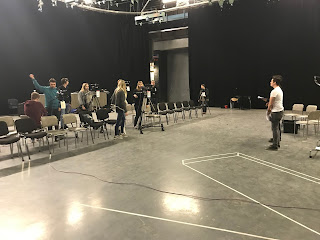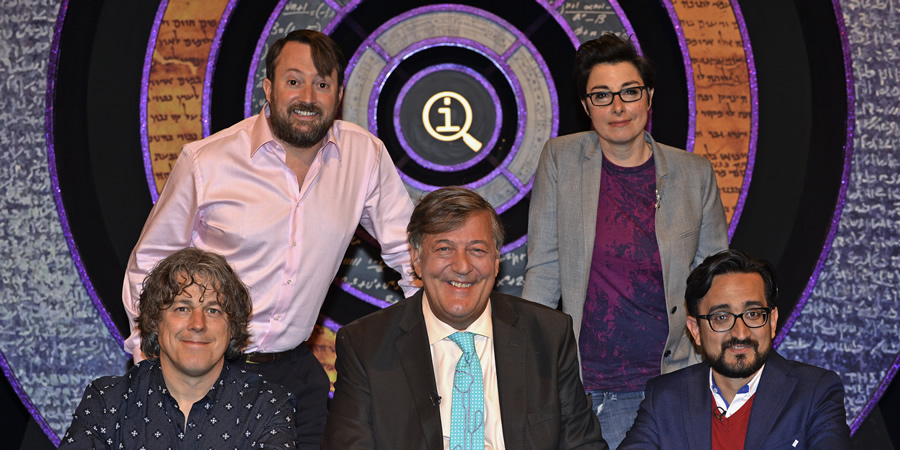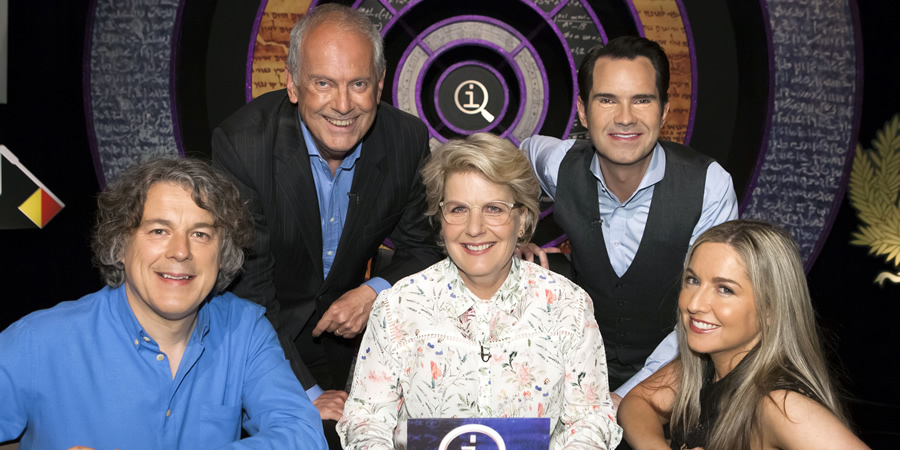Studio Production: Etsy VT Shoot
The second and final VT that my group was in charge of filming, was the VT with the Etsy seller. We wanted to film a VT that would give a little background information on Bonnie, our online clothes retailer.
Although my primary role outside of the studio is as a researcher, I thought it would be a good idea for me to attend this shoot to lend a hand (since our director George Wing couldn't make it) and also since I was the person who initially contacted and reached out to Bonnie, I thought it would be a good idea for her to meet me so I could introduce myself in person and brief her further about the show.
We met at the studios in the morning before heading to the contributors house as a group. We introduced ourselves to Bonnie and explained our idea with her further. We had a quick reccie of her studio to see which angles and which table would look the best. \
 Although the first room we looked at had more natural light, this was not the contributors actual studio, and as such did not have convenient access for the her sowing machine. As such we wanted the contributor to feel as natural and relaxed as possible, so we were happy to set up some LED's in her studio to give as a great new set up. Although George Wing wasn't with us, we set up the composition of the shot to get a decent mise en scene that we thought he would be happy with. George had also sent us a few video examples and a brief of the look he had in mind that we would do our best to adhere to.
Although the first room we looked at had more natural light, this was not the contributors actual studio, and as such did not have convenient access for the her sowing machine. As such we wanted the contributor to feel as natural and relaxed as possible, so we were happy to set up some LED's in her studio to give as a great new set up. Although George Wing wasn't with us, we set up the composition of the shot to get a decent mise en scene that we thought he would be happy with. George had also sent us a few video examples and a brief of the look he had in mind that we would do our best to adhere to.
For this shoot we decided to go with a two camera set up. This is so we could create an interesting montage sequence that would maintain the audiences attention. This way we could also have one camera focussing on Bonnie while the other focussed on whatever she was making, the items she was using, the movement of the sowing machine etc. Having two cameras allowed us to get opposite angles and reverse shots of each item while still remaining within a 180 degree range.
In this shoot Alex Baldwin and Alex Hargood were the main camera and sound operators. Connor Deamer was the producer (although his role overlapped in to that of a director as well which worked well, giving us key guidance). We also had Laura who was there with me to lend a hand and make the contributor comfortable.
During this shoot I practiced my floor managing skills by briefing our talent on what we would be shooting, where they should walk, look etc. and when I wasn't doing this I was camera assisting, making sure the exposures and white balances matched, suggesting shots and occasionally taking control of a camera to follow some action.


We filmed a set up sequence, getting some high angle shots of the materials being played out on the table and the sowing machine being set up. Then Bonnie took us through the process of making one of her items. We made sure to include a few pull focuses, zooms, pans and title so that we could create an interesting montage in the edit.
 After the process was finished we were sure to get some wide and panning shots of the finished item; the kind you might see on a live broadcast. We finished the day by filming a small introduction sequence (being careful not to divulge too much background info that we are saving for the studio interview) and also obtaining a few establishing shots of the house and studio to help lead in the sequence.
After the process was finished we were sure to get some wide and panning shots of the finished item; the kind you might see on a live broadcast. We finished the day by filming a small introduction sequence (being careful not to divulge too much background info that we are saving for the studio interview) and also obtaining a few establishing shots of the house and studio to help lead in the sequence.
Overall the day went well. We got plenty of footage that we can create a montage from and it was great to meet the contributor that I had been talking to these past few weeks.
Although my primary role outside of the studio is as a researcher, I thought it would be a good idea for me to attend this shoot to lend a hand (since our director George Wing couldn't make it) and also since I was the person who initially contacted and reached out to Bonnie, I thought it would be a good idea for her to meet me so I could introduce myself in person and brief her further about the show.
We met at the studios in the morning before heading to the contributors house as a group. We introduced ourselves to Bonnie and explained our idea with her further. We had a quick reccie of her studio to see which angles and which table would look the best. \
 Although the first room we looked at had more natural light, this was not the contributors actual studio, and as such did not have convenient access for the her sowing machine. As such we wanted the contributor to feel as natural and relaxed as possible, so we were happy to set up some LED's in her studio to give as a great new set up. Although George Wing wasn't with us, we set up the composition of the shot to get a decent mise en scene that we thought he would be happy with. George had also sent us a few video examples and a brief of the look he had in mind that we would do our best to adhere to.
Although the first room we looked at had more natural light, this was not the contributors actual studio, and as such did not have convenient access for the her sowing machine. As such we wanted the contributor to feel as natural and relaxed as possible, so we were happy to set up some LED's in her studio to give as a great new set up. Although George Wing wasn't with us, we set up the composition of the shot to get a decent mise en scene that we thought he would be happy with. George had also sent us a few video examples and a brief of the look he had in mind that we would do our best to adhere to. For this shoot we decided to go with a two camera set up. This is so we could create an interesting montage sequence that would maintain the audiences attention. This way we could also have one camera focussing on Bonnie while the other focussed on whatever she was making, the items she was using, the movement of the sowing machine etc. Having two cameras allowed us to get opposite angles and reverse shots of each item while still remaining within a 180 degree range.
In this shoot Alex Baldwin and Alex Hargood were the main camera and sound operators. Connor Deamer was the producer (although his role overlapped in to that of a director as well which worked well, giving us key guidance). We also had Laura who was there with me to lend a hand and make the contributor comfortable.
During this shoot I practiced my floor managing skills by briefing our talent on what we would be shooting, where they should walk, look etc. and when I wasn't doing this I was camera assisting, making sure the exposures and white balances matched, suggesting shots and occasionally taking control of a camera to follow some action.


We filmed a set up sequence, getting some high angle shots of the materials being played out on the table and the sowing machine being set up. Then Bonnie took us through the process of making one of her items. We made sure to include a few pull focuses, zooms, pans and title so that we could create an interesting montage in the edit.
 After the process was finished we were sure to get some wide and panning shots of the finished item; the kind you might see on a live broadcast. We finished the day by filming a small introduction sequence (being careful not to divulge too much background info that we are saving for the studio interview) and also obtaining a few establishing shots of the house and studio to help lead in the sequence.
After the process was finished we were sure to get some wide and panning shots of the finished item; the kind you might see on a live broadcast. We finished the day by filming a small introduction sequence (being careful not to divulge too much background info that we are saving for the studio interview) and also obtaining a few establishing shots of the house and studio to help lead in the sequence. Overall the day went well. We got plenty of footage that we can create a montage from and it was great to meet the contributor that I had been talking to these past few weeks.









































